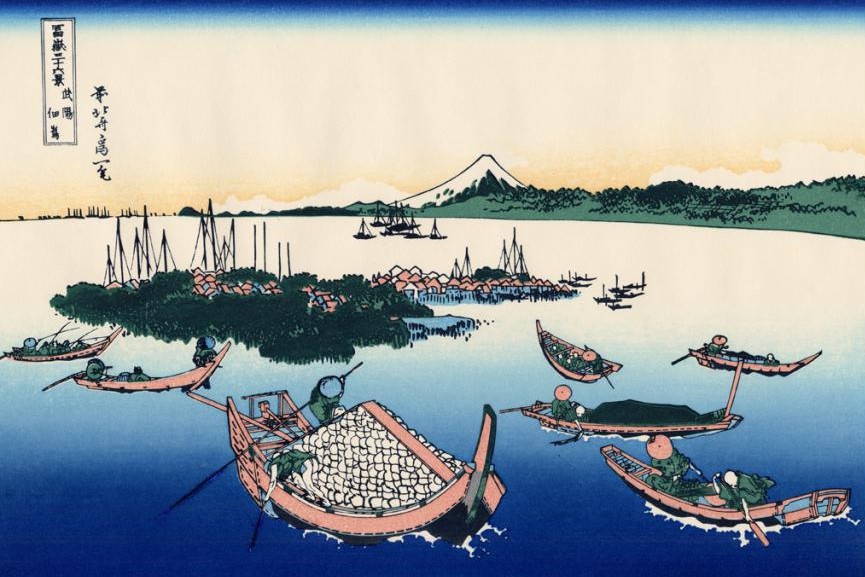
Defining Edomae: Exploring Historical and Modern Perspectives
“Edomae”
When you hear this word, what area do you imagine?The entire Tokyo Bay area? The waters around Shinagawa and Omori?
Sushi, tempura, Kabayaki. These words, which color the fish-eating culture of Japan, especially Tokyo and Edo, have changed their definitions as time has passed.
The Historical Scope of Edomae: A Closer Look
In a “Bunsei 2-nen document” submitted to the shogunate in the late Edo period by the Nihonbashi fish market, “Edomae” is defined as “the inside of a straight line connecting the first pole stake at Shinagawa Suzaki to the pine pole stake at Fukagawa Suzaki. It is awkward, but let us dare to draw the boundary line on the present map and look inside it.

How narrow!
The term “Edomae” referred to a very narrow area of the sea (this coincided with the official view of the shogunate at the time, and it is believed that fish wholesalers adapted to this view).
In the Meiji era (1868-1912), the scope of this area expanded slightly. The “History of the Rise and Fall of the Tokyo Bay Fishery” defines “Edomae” as “the inner area between the mouth of the Tama River on the border of Kanagawa Prefecture and the mouth of the Edogawa River on the border of Chiba Prefecture. This aligns with the administrative division that expanded with the establishment of Tokyo Prefecture in the Meiji era. The sea in front of Tokyo was read as “Edomae.
Then, what is the current definition of “Edomae”?
The Contemporary Definition of Edomae

The definition of “Edomae” was discussed in the “Subcommittee on Food Culture of the Committee to Study the Restoration of Tokyo Bay,” which was established by the Fisheries Agency in 2004. It was decided that “Edomae” refers to the entire Tokyo Bay. Fresh seafood caught in Tokyo Bay is defined as Edomae fish. In the historical context, the “inner area between Sagami Suzaki and Futtsu-mura is called “Uchiumi,” and it is sometimes referred to as “Tokyo Inner Bay” today.
Various people are trying to preserve and pass on this “Edomae” food culture today. It may be challenging to call fish caught only in a narrow area of the original fishing grounds “Edomae. Still, we hope that the cuisine using the bounty of Tokyo Bay and the food culture born from it will continue in the future.
Reflecting on the Changing Boundaries of Edomae
But when I first learned that the definition of “Edomae” has continued to expand, I had a scary thought. I thought, “Well, there is no more seafood in Tokyo Bay than there used to be,” and I thought, “Well, then, what about the places just outside of Tokyo Bay? Then, let’s define the area outside Tokyo Bay as “Edomae. Well, we can’t catch any more. If we go as far as Shizuoka, we can call it “Edomae”…If we go this far, we can call it “Edomae” if it’s from the seas around Japan. It’s such a hassle… If it’s from East Asia…” I felt chilly when I thought of how “Edomae” was drifting away and losing its original form.
I wonder how far into the future we will call “Edomae.”
(The top picture was taken from Hokusai Katsushika’s Fugaku Sanjurokkei (Thirty-six Views of Mount Fuji) “Buyo Tsukudukudajima” on this website.)